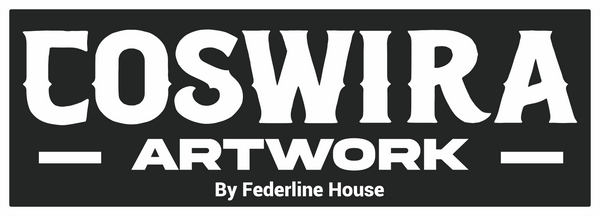What You Need to Get Started with EVA Foam Cosplay Props
From cutting tools to adhesives and sealing techniques — get a list of beginner-friendly materials to start crafting confidently.
If you’ve ever dreamed of building your own cosplay props — swords, armor, masks, or full character builds — EVA foam is one of the best materials to start with. It’s lightweight, flexible, affordable, and easy to work with. But before you jump into your first build, it helps to know what tools and materials you’ll need to get going.
In this article, we’ll cover the essential items for beginners looking to get started with EVA foam crafting.
🧽 1. EVA Foam Sheets
The star of the show! EVA foam is available in various thicknesses, from 2mm (great for detail work) to 10–15mm (ideal for big props and armor bases). You can find it in rolls or pre-cut sheets at craft stores, hardware stores, or online cosplay shops. Start with 5mm for general builds — it’s easy to shape and versatile.
✂️ 2. Cutting Tools
You’ll need sharp tools for clean, accurate cuts:
- Craft Knife / Box Cutter: A utility knife with replaceable blades is your best friend. Sharpness matters!
- Hobby Knife (like X-Acto): Perfect for smaller details and tight corners.
- Cutting Mat: Protect your work surface and extend the life of your blades.
Pro Tip: Always keep extra blades nearby. Dull blades tear foam and lead to messy edges.
---
🔥 3. Heat Gun
Heat shaping is a key step in foam crafting. A basic **heat gun** lets you curve foam pieces and seal the surface before painting. It also activates contact cement for a stronger bond.
- Look for a heat gun with adjustable temperature settings.
- Don’t use a hair dryer — it doesn’t get hot enough for foam shaping.
---
🧴 4. Adhesives
Gluing foam pieces together requires the right type of adhesive:
- Contact Cement: The strongest and most popular option. Apply thin layers to both surfaces, let them dry for a minute, then press together.
- Hot Glue: Easy to use, but bulky and not ideal for tight seams or curved surfaces.
- Super Glue: Good for fast bonding on small pieces or details.
Always use adhesives in a well-ventilated area — safety first!
🖌️ 5. Primers & Sealers
Before painting EVA foam, you need to seal it to create a smooth surface and prevent paint from soaking in.
- Plasti Dip (Spray Rubber): A fan favorite. It adds flexibility and durability to your prop.
- Mod Podge: Brush-on sealer that works well for small builds and detail work.
- White Glue + Water Mix: A budget option for sealing, though less durable.
---
🎨 6. Paints
Once sealed, you can paint your foam using:
- Acrylic Paints: Easy to find, inexpensive, and great for hand-painting.
- Spray Paints: Provide even coverage and quick results (check for foam compatibility).
- Airbrush (optional): Excellent for gradients and weathering effects.
Finish it all off with a clear coat (matte or gloss) to protect your paint job!
---
🧤 7. Safety Gear
Don’t skip this part!
- Respirator Mask: Essential when using contact cement or spray paints.
- Gloves: Protect your hands from adhesives and paint.
- Eye Protection: Especially important when heat shaping or sanding.
✅ Optional but Helpful Tools
- Dremel Rotary Tool: For beveling edges and adding surface detail.
- Sanding Block or File: Clean up seams and smooth out rough spots.
- Metal Ruler: For straight cuts and measuring patterns.
- Pins or Clips: Hold foam pieces in place while gluing.
---
🛠️ Ready to Start Your Build?
Browse our collection of high-quality, printable cosplay prop patterns – designed for foam crafting, easy to scale, and beginner-friendly. From swords and armor to full prop sets inspired by your favorite characters, we’ve got everything you need to bring your next cosplay to life.
